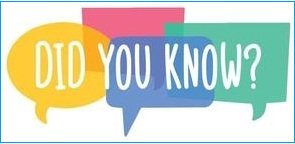Being At Cause vs Being At Effect:
How To Become More Empowered
On Page 1 of our Cause vs Effect series, we looked at two opposing mindsets: being at cause vs being at effect. We defined both terms and described how being at effect resulted in feelings of being stuck, being trapped, being "fated" to failure and being powerless. We also described how being at cause resulted in personal empowerment, being able to find solutions instead of being trapped in problems, and how anyone who wants to make new progress in life needs to make this shift. But how?
On Page 2 of our Cause vs Effect series, we looked at how we may have come by our dysfunctional identities, values and beliefs. Whether they were through personal experience or what we were taught by others, we certainly came by them for compelling reasons. Yet we have equally compelling reasons to move on and replace them with healthier options. Once we've made that decision, how do we make those changes?
On this page 3 of our Cause vs Effect series, we'll look at a variety of methods that any individual can use to move from being at effect, to being at cause. We'll include techniques that a person can use on him/herself, along with techniques that a professional coach, hypnotherapist or NLP practitioner may use to guide a client. Most folks use a combination of the above three categories to move from who they were, to who they want to be.
It might seem odd to split this single topic into three different pages. Yet this single concept is one of the foundations of reaching personal or professional achievement. if you "get" this one concept, you'll be able to start making life happen the way you want, rather than waiting to see what life throws at you next. It's a profoundly powerful shift from being powerless, to being empowered.
Let's take a closer look.
How To Move From Being At Effect To Being At Cause
So, if we realize that we're at effect in one or more categories of life, how do we make the shift to being at cause? In short, there are a lot of different ways we can do this. Any one of these methods can be powerful in and of itself. Yet they are most powerful when combined. So let's look at individual methods, and then at ways to combine them. We'll cover techniques that any given person can use as a sort of "do it yourself" pick-me-up, as well as more advanced techniques which may call for a professional's assistance.
Personal Techniques:
Positive Affirmations, Vision Boards and Visualization
Many people recognize that they are at effect, or sense that they are caught up in beliefs about chronic victimhood. Many books, movies and self-care websites have promoted one or more ways to move through and beyond that point. Three such methods, namely affirmations, vision boards and visualization exercises, have been promoted as a way to break free of this self-imposed victimhood cycle. And these three methods are definitely a first step in the right direction. Let's take a look at each one.
Positive Affirmations are words or phrases that we say to ourselves throughout the day, as a reminder of who we are (or want to be), and what we are already accomplishing (or wish to accomplish). For instance, a writer who is working on his or her first book can use affirmations like "I'm an author! I can write well, I can craft a good narrative, I have a good command of language, and I'm going to see this through to completion." Those are all positive affirmations which touch on personal identities, values and beliefs associated with writing a book.
Vision Boards are an actual visual display of anything that help reinforce what a person wants to have, wants to be, or wants to accomplish. For instance, an athlete might create a vision board of his or her favorite athletes while they're competing, an image of a game win or finish line, a stopwatch showing a personal best time, and even a ticket to an upcoming event. This is another powerful way to build both confidence and motivation for achieving this new goal or accomplishment.
Visualization is an exercise that a person can engage in one or more times per day. It is essentially a brief meditation which includes internal affirmations and mental images, perhaps even mental sounds, of successfully achieving some condition, goal or accomplishment. For instance, some flight schools are teaching student pilots that if they ever encounter an in-flight emergency, they can mentally visualize finding solutions and landing safely. In these lessons, the pilots aren't taught the specifics of any given flight emergency; rather they are taught to quickly mentally shift away from focusing on the problem, whatever it may be, and instead focus on finding and deploying solutions. This exercise is valuable for anyone to learn, because we all experience situations where some problem comes up that we need to quickly deal with. If we focus on the problem, that will soon become all we can see. When we focus on finding solutions, we actually shift our subconscious over into a place of troubleshooting, brainstorming and solution-finding that some people have described as "electric". This moment is actually captured fairly frequently in movies, where the good guys are in some impossible situation, and suddenly one of them looks up with "that look" of sudden inspiration, at which point he or she says "I've got it!" and immediately deploys some clever answer. THAT is the benefit of visualization. And it is proof of the shift from being at effect, to being at cause.
Personal Techniques:
Eliminate Obstacles By Changing
Our Identities, Values and Beliefs
Many times, the above techniques provide powerful change in a person's life, particularly when that person combines them. However, many people have tried to use these methods, only to find lukewarm results, or no results at all. What is the missing ingredient between these two scenarios? Why do they work for some things, and not for others?
As we've seen throughout this conversation about cause and effect, the answer is not "out there" somewhere, but within. Bottom line, if the above methods are not enough to keep us on track and moving forward towards some goal, that's because we have one or more limiting identities, values and/or beliefs getting in the way.
The good news is, those are relatively easy to fix, once we know how. First, we identify whether the limitations are within a person's set of identities, values, and/or beliefs. Second, we use one or more techniques to change them from what they currently are, to what we want or need them to be. Finally, we start taking action to move the needle. To make actual real-world progress on our goals. To move from where we are, to where we want to be. When we start taking action in the real world, that's when we really start making solid progress.
Learning To Bootstrap Ourselves Up
At this point, we can take a few different roads:
- We can work on these issues ourselves, by learning these techniques and using them on ourselves.
- We can work with a professional who already knows these issues and techniques, and understands how to shepherd a person through thse changes.
These two options can be combined. For instance, a person may feel like he or she can learn meditation and/or self hypnosis to work on some obvious issues, but may need some guidance on more elusive problems. Another scenario is that a person may work with a professional while those issues are vague and undefined, then learn specific techniques to deal with specific problems once those problems have been identified.
On Page 4 we'll explore these two different options.
|
Shopping Cart |
|
Contact Me For Help Reaching Your Goals

When you're ready to move forward, push through obstacles and make real progress towards your goals, Contact Me today.
New Products and Services Request Form
Do you have a product or service request that you don't already see listed here? I'd love to hear your ideas! Please feel free to either Contact Me or fill out my new Product and Service Request Form.
Thanks for your suggestions!
